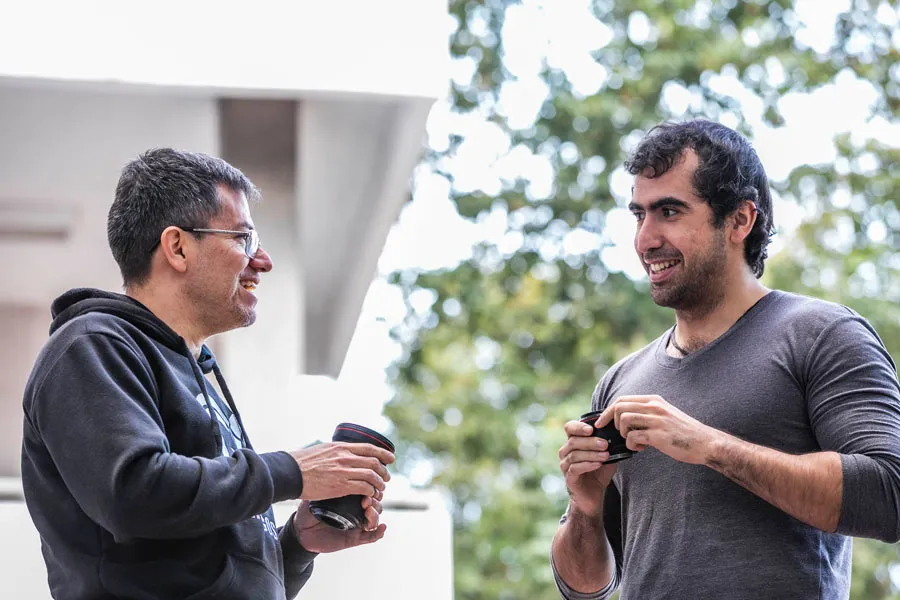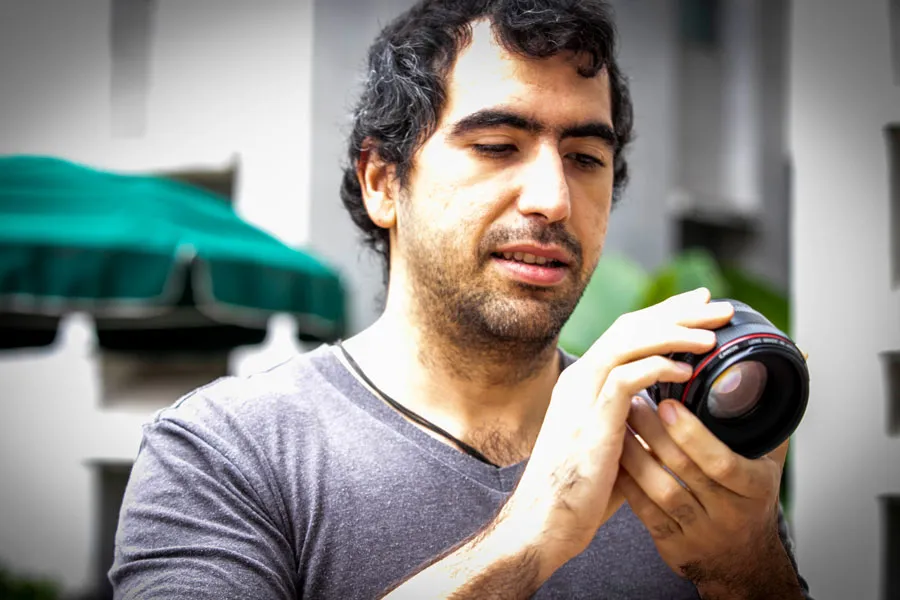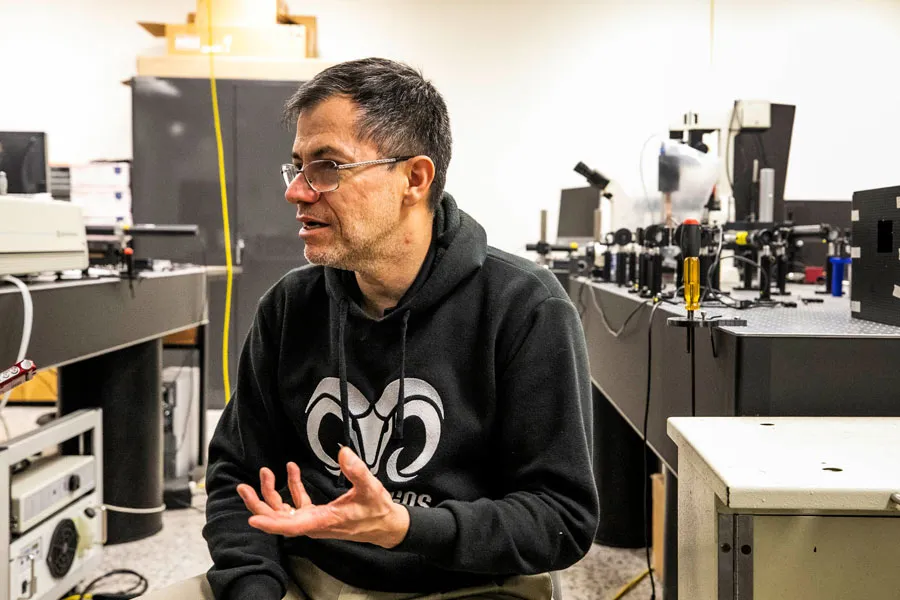“If Newton were alive today, I think he’d like to read my PhD thesis,” says Rafael González, a PhD student at Tec de Monterrey.
González and his mentor, Julio César Gutiérrez (the Tec’s third most published researcher over the past decade) have just published the answer to a problem that seemed impossible to solve.
They published the formula that demonstrates it is possible to solve the optical fault known as chromatic aberration with a single lens in Applied Optics, the Journal of The Optical Society of America.
Chromatic aberration, or spherochromatism, means that the colors in light disperse when passing through a lens and cannot be focused on the same point.
Isaac Newton himself had attempted to solve it, something Rafael is already familiar with, as the year before last he discovered the solution to another optical problem attempted by Newton: spherical aberration.

GOODBYE CHROMATIC ABERRATION
Surrounded by a sea of lenses (like the ones on your camera), Rafael González and Dr. Gutiérrez talked to CONECTA about their discovery.
“Newton assumed in his book Opticks (his second most famous work), that you couldn’t make a single-lens system to correct chromatic aberration,” explains Rafael.
“Scientists such as Newton attempted it, but so did Huygens, Descartes, Abbe. It was a problem attempted by many physicists,” adds Gutiérrez.
“Scientists such as Newton attempted it (...) It was a problem attempted by many physicists.”
What they have now achieved is a mathematical formula with an approximate but valid solution that can correct it with a single lens.
“It’s a model that gives you the optimum surface area of a lens for minimizing chromatic aberration,” summarizes Gutiérrez.
Their solution was given in the article Analytic design of a spherochromatic singlet.


TWO ZERO TO RAFAEL
For Rafael González, this is the second time in two years that he’s found a solution to an optical problem that was unsolved for centuries.
In 2018, he published the exact solution to spherical aberration in the same Journal of The Optical Society of America.
In fact, that work was what opened the door to the new solution to chromatic aberration.
“It was straight after having found the previous solution, although we had to work hard on it,” he says.
ALSO READ: THE SOLUTION HE DISCOVERED TO SPHERICAL ABERRATION
Spherical aberration causes a loss of resolution when viewing through spherical lenses. Newton and others had also attempted a solution.
The article was downloaded thousands of times and earned the Editor’s Pick. On that occasion, González and his colleague Alejandro Chaparro had toiled away on solving the centuries-old problem.

HIS WORK AND ITS IMPACT
For Dr. Gutiérrez, Director of the Optics Center at the Tec’s Monterrey campus and reviewer of González’s PhD thesis, what his student has done is remarkable:
“It means a lot. The work shows how many hours Rafa has put into it,” he says with praise.
“As Mexicans, it’s great to see things being done well to that end. There’s a lot of talent in Mexico and a great deal of potential,” he adds.
The specialist explains that González’s work on these solutions could have an effect on how optical problems are addressed now:
“The impact has to do with reformulating how you attack optical design problems, which is to say at the level of how optical design theory is studied.”
“The impact has to do with reformulating how you attack optical design problems.”

THE “HOLY GRAIL” AND THE SEARCH FOR A PERFECT FORMULA
Rafael wants to continue solving problems, inspired by the great minds of science.
He’s currently working with the University of Oxford and the Mixteca University on a microscope lens that can be used in cellphones.
Not only that, he’s also working on two books, together with Gutiérrez and Chaparro. One is for the Institute of Physics in the United Kingdom and the other is for the International Society for Optics in the US.
He says his goal is to focus on aplanatic lens theory (for resolving optical aberrations) together with what he’s already solved.
“Two very important problems within the theory have now been solved and I’m convinced that I only need time and resources to carry on,” he says.
“Let’s say that the Holy Grail would be discovering a general equation for an optical system that was free of the 5 Seidel Aberrations (or classical monochromatic aberrations),” says the physicist.
“The Holy Grail would be discovering a general equation for an optical system that was free of the 5 Seidel Aberrations.”
YOU’LL ALSO WANT TO READ:





